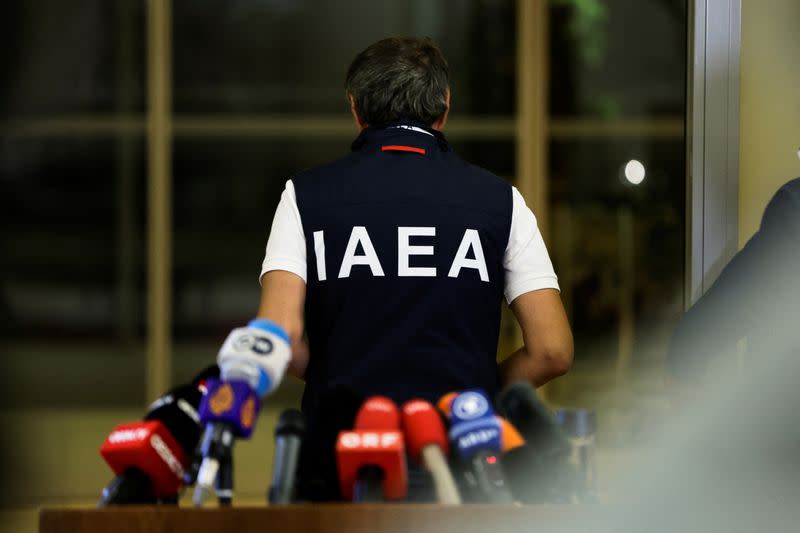IAEA report on Ukraine says situation at Zaporizhzhia 'not sustainable'

VIENNA (Reuters) - The U.N. nuclear watchdog, the International Atomic Energy Agency (IAEA), on Tuesday issued a report on the situation in Ukraine including at the Russian-held Zaporizhzhia nuclear power plant (ZNPP) where it has established a presence.
Below are highlights from the roughly 50-page text. See also this factbox on the report's recommendations:
OVERALL
"The IAEA is still gravely concerned about the situation at the ZNPP – this hasn't changed."
"Despite challenging circumstances, the IAEA has continued to implement safeguards in Ukraine ... and the IAEA has not found any indication that would give rise to a proliferation concern."
PROTECTION ZONE AT ZAPORIZHZHIA
"Pending the end of the conflict and re-establishment of stable conditions there is an urgent need for interim measures to prevent a nuclear accident arising from physical damage caused by military means. This can be achieved by the immediate establishment of a nuclear safety and security protection zone.
"The IAEA is ready to start immediately the consultations leading to the urgent establishment of such a nuclear safety and security protection zone at the ZNPP."
DAMAGE AT ZAPORIZHZHIA
"The (IAEA) team closely witnessed shelling in the vicinity of the ZNPP, in particular on 3 September when the team was instructed to evacuate to the ground level of the Administrative Building. Moreover, the team observed damage at different locations caused by reported events with some of the damage being close to the reactor buildings, including damage to the following:
• One turbine lubrication oil tank;
• The roofs of various buildings such as the building for the spent fuel transporter vehicle;
• The special building that houses, among other items, the fresh nuclear fuel and the solid radioactive waste storage facility;
• The new training building;
• The building where the Central Alarm Station of the physical protection system is located; and
• The container where the radiation monitoring system is located, in the vicinity of the dry spent fuel storage facility.
...
"Some repair work had already been carried out or was in progress for some of the damage and noted that further work would be needed to repair all the damage caused. The team was informed that the radiation levels in the area remained normal."
RUSSIAN MILITARY PRESENCE
"The team observed the presence of Russian military personnel, vehicles and equipment at various places at the ZNPP, including several military trucks on the ground floor of the Unit 1 and Unit 2 turbine halls and military vehicles stationed under the overpass connecting the reactor units. The team also observed the presence of an expert group from (Russian nuclear body) Rosenergoatom. It was explained to the team by the Ukrainian plant staff and managers that the role of this expert group was to provide advice on nuclear safety, security, and operations to the management of the ZNPP."
UKRAINIAN STAFF OPERATING ZAPORIZHZHIA
"The team established that the operating staff did not have unrestricted access to some areas, such as the spray cooling ponds, roofs of the buildings, and structures in the area of the water intake, and that access to the cooling ponds area was required to be granted by the military personnel at the site. Following the (IAEA mission to Zaporizhzhia), the Director General raised concerns that such restrictions may limit the access of operating staff to some locations in case of an emergency and, thus, jeopardize the effectiveness of normal operation and the emergency response.
"The Ukrainian plant staff and managers reported to the team that 40% of positions in the area of physical protection were not currently staffed, which significantly increased the workload for existing staff to ensure continued physical protection at the site."
(Reporting by Francois Murphy; Editing by Tomasz Janowski)

